Cats, big or small, are surely some of the most athletic animals on planet Earth. While they spend most of the day snoozing, when they’re hunting or escaping danger they can leap enormous distances, in pretty much any direction. They’re also flexible and coordinated enough to twist their bodies as they leap or fall from a great height to make sure they land on their feet. Their death-defying antics no doubt are what gave rise to the myth that cats have “nine lives.” How do they do it, and just how high can cats jump, anyway?
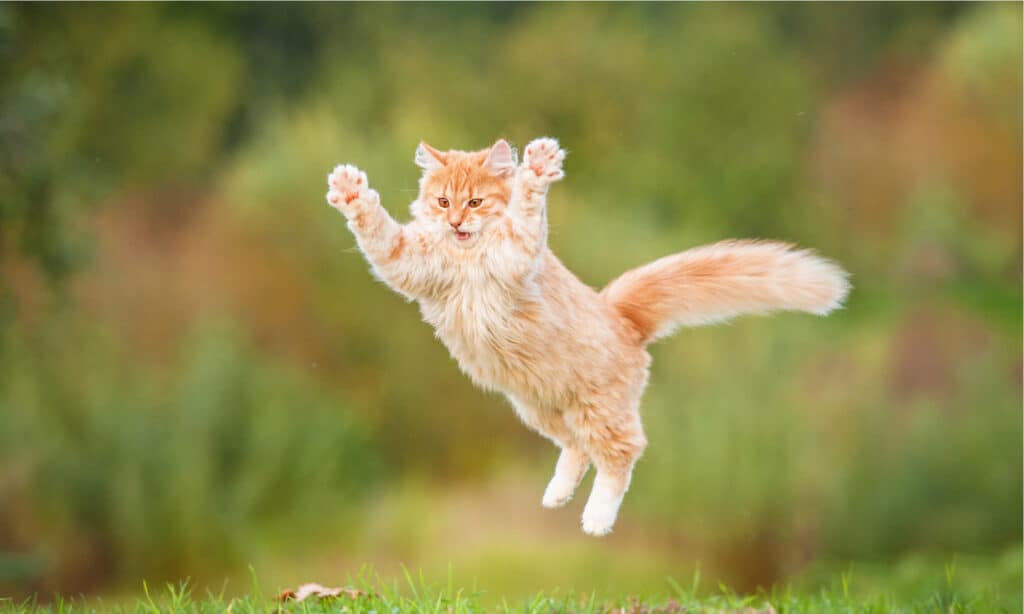
Happy, hunting, enranged, or terrified, who can tell? All we know is this cat can JUMP!
©Rita_Kochmarjova/Shutterstock.com
Shared Characteristics of Cats
Cats are a type of mammal in the family felidae and the order Carnivora. There are 41 different species with an incredible diversity of fur colors and patterns and a huge range of sizes. The largest cat species is the tiger, averaging 150 inches long from head to the end of the body (minus the tail) and up to 680 pounds. The smallest cat species is the black-footed cat, an African wild cat that reaches only 19 inches long and 4 pounds. Compare that with a domestic cat, which on average reaches about 18 inches in length and 9-11 pounds.
Some things that cats share in common are sharp retractable claws (except the cheetah), powerful flexible bodies, and jaws with a powerful bite. Cats are indigenous to every continent except Australia and Antarctica. They can live in all sorts of habitats: forests, mountains, deserts, wetlands, and alongside humans wherever they live. With highly-developed vision and hearing, cats are formidable hunters, stalking a wide variety of mammals, birds, fish, (and cat treats). Cats of all types, wild and domestic, make a wide diversity of vocalizations, such as meowing, hissing, growling, spitting, snarling, and purring. Some of the bigger wild species such as lions roar.
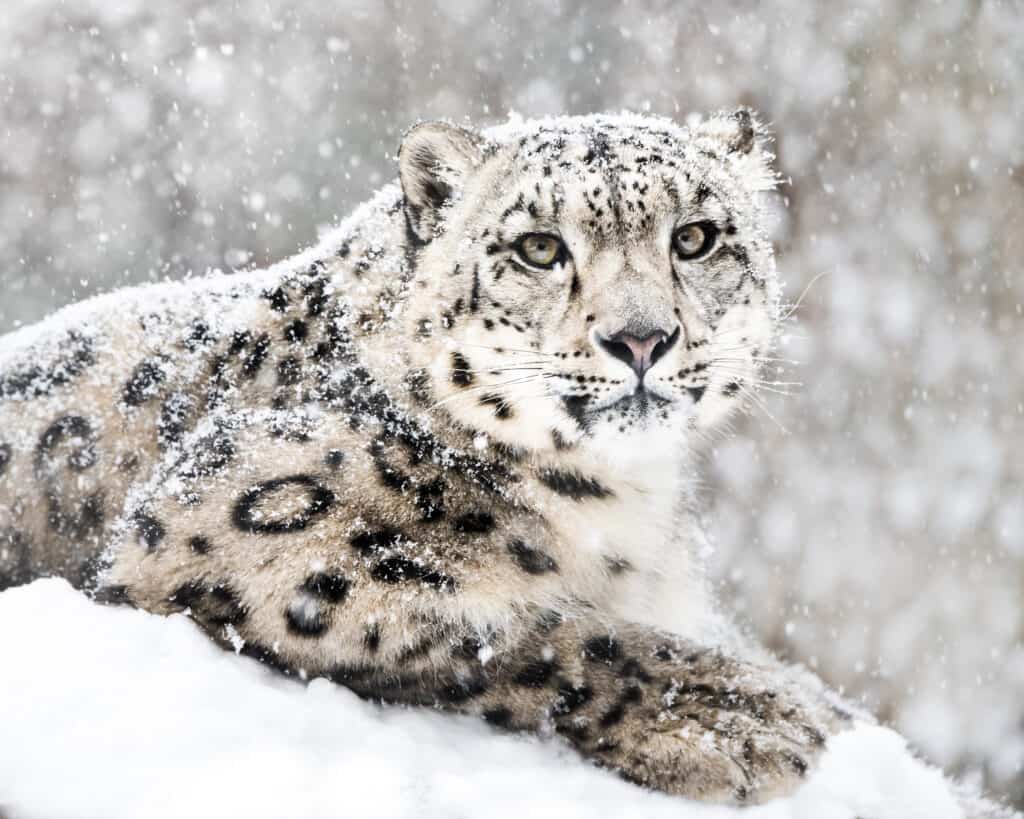
Cats like this snow
leopard
thrive in all sorts of extreme environments.
©Abeselom Zerit/Shutterstock.com
Why Do Cats Jump?
Cats jump for all sorts of reasons. Hunting is the most obvious. Jumping up to a high tree branch or rocky outcropping gives them a wider vantage point and the opportunity to spring down upon unsuspecting prey below. They can also spring through high and precarious places in pursuit of climbing or flying prey. The serval can even leap up to 15 feet in the air to snatch birds in flight! Jumping also helps cats get to a place of safety to rest or to escape pursuing predators. And sometimes they are just feeling curious or playful, exploring their environment or play-fighting with one another. These are some of the reasons they insist on climbing your drapes, bookshelves, or Christmas tree even though they have a full bowl of kibble.
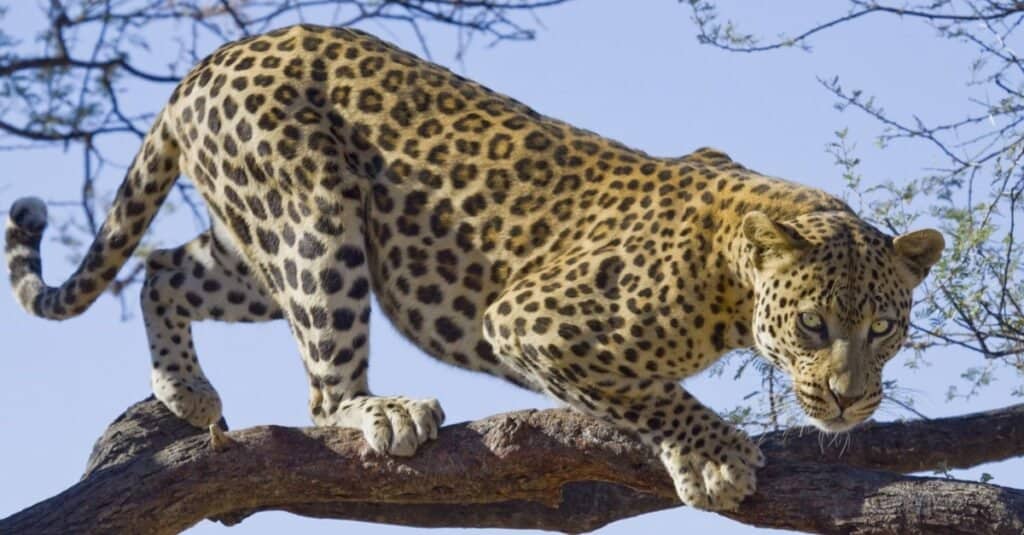
Jumping helps cats pursue prey through high and precarious places as well as get themselves to safety from predators.
©Michael Wick/Shutterstock.com
Why Do Cats Jump So Well?
Cats have about 500 muscles in their bodies, only 100 less than human beings. But a cat’s muscle fibers are three times stronger than those of a human athlete. This gives them incredible abilities, such as jumping nine times their own height from a seated position. Much of their leaping power comes from their hind legs which are longer and stronger than the front legs they use to stabilize themselves as they land. The back legs are angled to help absorb the force of landing. Cats have a complex inner ear apparatus that helps them stay aware of what directions are up and down at all times. Their spines are so flexible, they can rotate their front half and back half independently. As a result, they can twist their bodies mid-air to land gracefully on their feet when jumping or on the rare occasion when they might fall.

©dezy/Shutterstock.com
Cats almost always land on their feet, and look good doing it.
Comparison of Cat Jump Heights
This table compares how high various species of cats can jump. It is arranged in order of the greatest to lowest jumping height. If you live in snow leopard territory, better keep your second-story windows closed, because they can jump right in whenever they want. And don’t giggle at the black-footed cat’s little 5-foot jump. The average person can only jump 1.5-2 feet, and the best NBA players can make it only to about 3.75 feet (45 inches), far less than the world’s smallest cat. In fact, if a 4-pound cat can jump 5 feet, a 100-pound human with that kind of muscle performance should be able to jump 125 feet, as tall as a 12-story building! Humans, stop skipping leg day!
| Species | Weight | Vertical Jump |
|---|---|---|
| Snow leopard | 72 lbs. | 20 ft. |
| Tiger | 680 lbs. | 20 ft. |
| Cougar | 220 lbs. | 18 ft. |
| Serval | 26 lbs. | 15 ft. |
| Lion | 420 lbs. | 12 ft. |
| Bobcat | 40 lbs. | 10 ft. |
| Jaguar | 210 lbs. | 10 ft. |
| Domestic cat | 11 lbs. | 7 ft. |
| Jaguarundi | 15 lbs. | 6 ft. |
| Black-footed cat | 4 lbs. | 5 ft. |
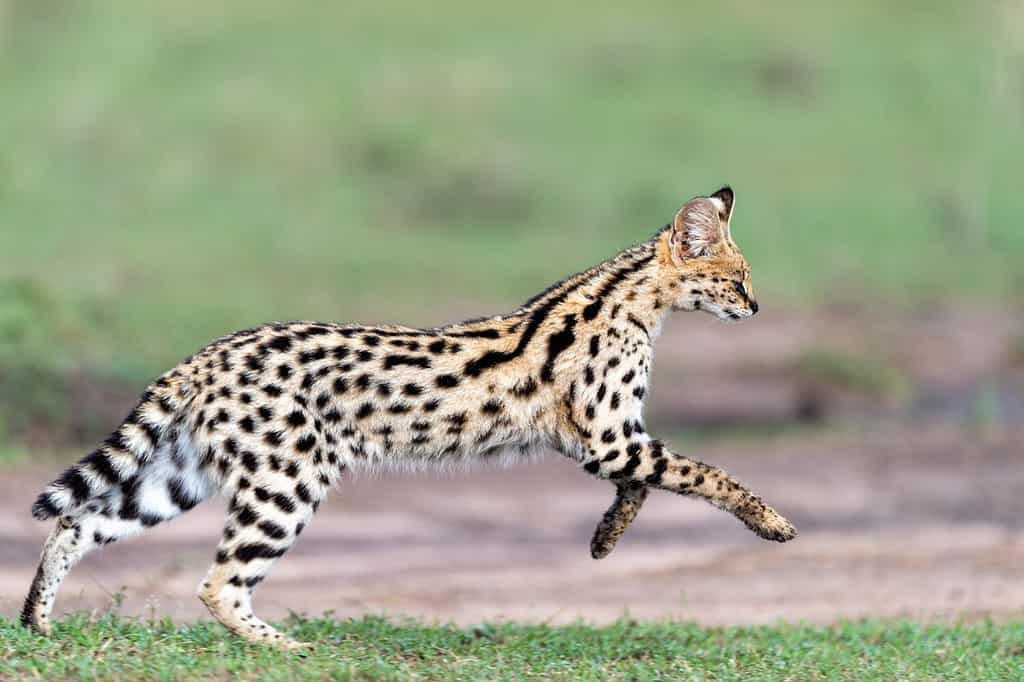
Serval cats can leap 15 feet high to snatch flying birds right out of the air.
©Reto Buehler/Shutterstock.com
How To Keep Your Cat From Jumping
It’s in a cat’s DNA to jump and it’s really one of their most impressive behaviors. So you won’t want to get rid of that behavior entirely but at the same time, there have to be limits when you’re sharing your living space. Here are a few suggestions of ways to keep your cat from jumping up onto things you don’t want them to.
- Provide a cat tree to give your kitty a high-up place to rest, feel safe, and survey its domain.
- Give it some stimulating toys so it won’t feel bored.
- Close the blinds of windows you don’t want the cat in, and open them in those that are ok for the cat to look out the window. You can also attach a cat perch with suction cups to an approved window.
- Don’t leave food on the kitchen counters. Keep the cat in another room while you’re cooking and eating. Put little tasty treats on approved jumping and climbing areas, like a cat tree.
- Give the cat adequate hiding spaces to retreat to, out of reach of pets or children, when it is afraid.
- Put double-sided tape or aluminum foil on the places you don’t want it to jump. Cats don’t like the feeling of either of them and will avoid those places.
- Put away interesting knick-knacks that might attract your cat’s curiosity to high places. If your cat is an active climber, you might be happier with a more minimalistic decorating style.
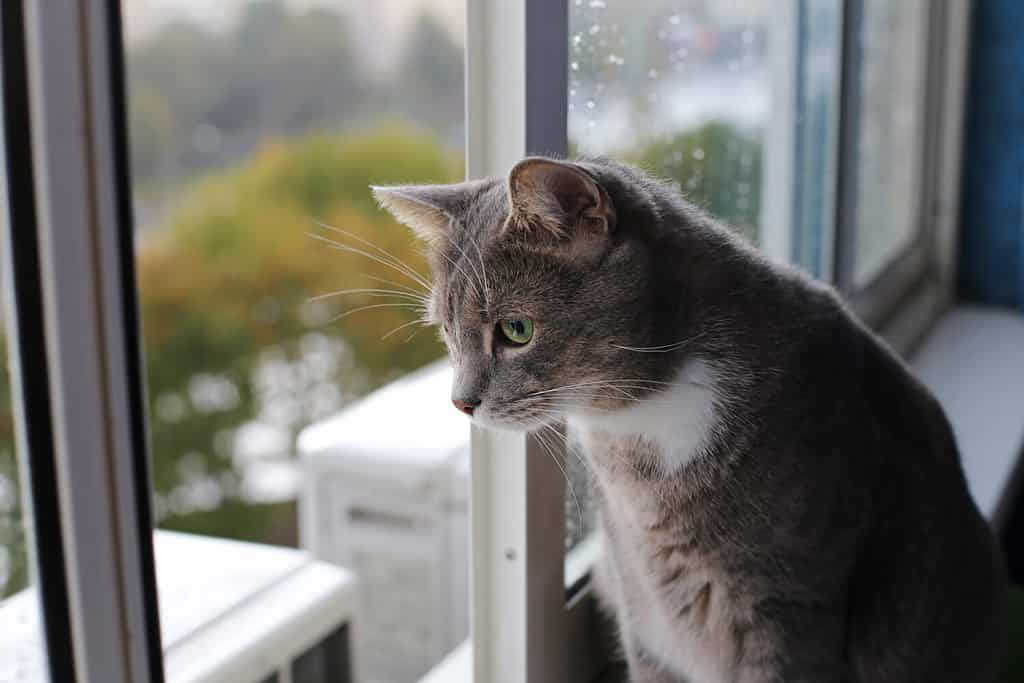
Provide your cat with space in at least one window to be able to look down from on high like its wild ancestors.
©MorphoBio/Shutterstock.com
And Now You Know
Hopefully, this has answered all your burning questions about jumping cats: what kind of cats there are, why and how they jump, how they manage not to die when they land, which cats are the best jumpers, and how to stop your cat from jumping where you don’t want it to. Along the way, you found out the world’s smallest cat can easily jump higher than the best NBA players. Now go and amaze your friends with all this knowledge, and the next time you see a cat, give it a high-five. Or at least a respectful nod.
The photo featured at the top of this post is © Miroslav Halama/Shutterstock.com
Thank you for reading! Have some feedback for us? Contact the AZ Animals editorial team.






